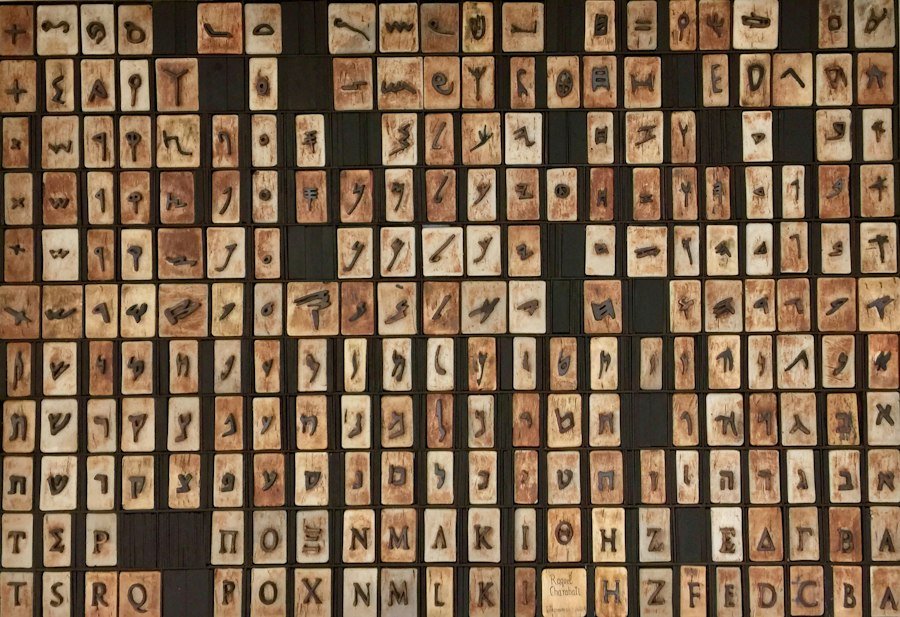

How to Discuss Mythology in Spanish: 20 Mythological Terms
Mythology is a fascinating aspect of human culture that has been present in various societies throughout history. It encompasses a collection of stories, legends, and beliefs that explain the origins of the world, natural phenomena, and the existence of gods and supernatural beings. These myths often serve as a way for people to make sense of the world around them and provide moral and cultural guidance.
In Spanish culture, mythology holds a significant place. Spain has a rich history and diverse cultural heritage, which is reflected in its mythology. From ancient civilizations like the Celts and the Iberians to the influence of Greek and Roman mythology, Spanish mythology is a tapestry woven with various threads. It is a reflection of the country’s history, traditions, and beliefs.
Table of Contents
ToggleKey Takeaways
- Mythology is an important aspect of Spanish culture and history.
- Understanding mythological terms is crucial for understanding Spanish literature and art.
- The top 20 mythological terms in Spanish include “dios,” “mito,” and “ninfas.”
- Mythological figures like Don Juan and La Llorona are prominent in Spanish culture.
- Mythology has played a significant role in shaping Spanish history and identity.
Understanding the Importance of Mythological Terms
Mythological terms are not just confined to ancient stories; they are also deeply ingrained in everyday language. Many words and phrases in Spanish have their roots in mythology, and understanding these terms is crucial for cultural appreciation and effective communication.
For example, the word “narcissism” comes from the Greek myth of Narcissus, who fell in love with his own reflection. In Spanish, “narcisismo” refers to excessive self-love or vanity. Similarly, the word “titanic” comes from Greek mythology, where the Titans were powerful gods who ruled before the Olympian gods. In Spanish, “titanico” refers to something of immense size or strength.
By understanding these mythological terms, we can gain insights into the cultural values and beliefs that have shaped Spanish society. It allows us to appreciate the depth and richness of Spanish language and culture.
Top 20 Mythological Terms in Spanish
1. Zeus – The king of the gods in Greek mythology. In Spanish, “Zeus” refers to someone who is powerful or authoritative.
2. Hades – The god of the underworld in Greek mythology. In Spanish, “Hades” refers to the underworld or hell.
3. Poseidon – The god of the sea in Greek mythology. In Spanish, “Poseidón” refers to the sea or anything related to it.
4. Hera – The queen of the gods and the goddess of marriage in Greek mythology. In Spanish, “Hera” refers to a jealous or possessive woman.
5. Aphrodite – The goddess of love and beauty in Greek mythology. In Spanish, “Afrodita” refers to someone who is beautiful or seductive.
6. Apollo – The god of music, poetry, and healing in Greek mythology. In Spanish, “Apolo” refers to someone who is talented or gifted.
7. Ares – The god of war in Greek mythology. In Spanish, “Ares” refers to someone who is aggressive or combative.
8. Athena – The goddess of wisdom and warfare in Greek mythology. In Spanish, “Atenea” refers to someone who is wise or intelligent.
9. Dionysus – The god of wine and celebration in Greek mythology. In Spanish, “Dionisio” refers to someone who is festive or enjoys partying.
10. Hermes – The messenger of the gods in Greek mythology. In Spanish, “Hermes” refers to a messenger or delivery person.
11. Persephone – The queen of the underworld and the goddess of springtime in Greek mythology. In Spanish, “Perséfone” refers to someone who has a dual nature or changes frequently.
12. Demeter – The goddess of agriculture and fertility in Greek mythology. In Spanish, “Deméter” refers to someone who is nurturing or caring.
13. Narcissus – A beautiful youth who fell in love with his own reflection in Greek mythology. In Spanish, “Narciso” refers to someone who is self-absorbed or vain.
14. Medusa – A monster with snakes for hair whose gaze turned people to stone in Greek mythology. In Spanish, “Medusa” refers to someone who is terrifying or petrifying.
15. Minotaur – A creature with the head of a bull and the body of a man in Greek mythology. In Spanish, “Minotauro” refers to someone who is monstrous or intimidating.
16. Pandora – The first woman created by the gods in Greek mythology. In Spanish, “Pandora” refers to someone who brings trouble or misfortune.
17. Orpheus – A musician and poet who could charm all living things with his music in Greek mythology. In Spanish, “Orfeo” refers to someone who is talented or charismatic.
18. Hercules – A hero known for his incredible strength and bravery in Greek mythology. In Spanish, “Hércules” refers to someone who is strong or powerful.
19. Cupid – The god of love and desire in Roman mythology. In Spanish, “Cupido” refers to someone who is romantic or lovesick.
20. Venus – The goddess of love and beauty in Roman mythology. In Spanish, “Venus” refers to someone who is beautiful or attractive.
Mythological Figures in Spanish Culture
Spanish culture is rich with mythological figures that have played significant roles in shaping the country’s history, art, and literature. These figures often represent certain values, virtues, or aspects of human nature.
One of the most prominent mythological figures in Spanish culture is Don Quixote, the protagonist of Miguel de Cervantes’ famous novel “Don Quixote.” Don Quixote is a knight-errant who embarks on a series of adventures to restore chivalry and honor in a world he perceives as lacking these virtues. He has become a symbol of idealism, courage, and the pursuit of noble causes.
Another important mythological figure in Spanish culture is El Cid, a legendary hero and warrior who fought against the Moors during the Reconquista. El Cid, whose real name was Rodrigo Díaz de Vivar, is celebrated for his military prowess, honor, and loyalty. He has become a symbol of Spanish nationalism and is often portrayed as a noble and virtuous knight.
In addition to these fictional characters, Spanish culture also incorporates mythological figures from ancient civilizations. For example, the Celtiberians worshipped a god named Lugus, who was associated with light, healing, and craftsmanship. Lugus has become a symbol of wisdom and creativity in Spanish culture.
These mythological figures are often represented in art and literature, further cementing their place in Spanish culture. Paintings, sculptures, and literary works depict these figures in various forms, allowing people to connect with their stories and symbolism.
The Role of Mythology in Spanish History
Mythology has played a significant role in shaping Spanish history and culture. It has influenced the beliefs, values, and traditions of the Spanish people throughout the centuries.
One example of how mythology has influenced Spanish history is the Reconquista. The Reconquista was a period of nearly 800 years during which Christian kingdoms in Spain fought to reclaim the Iberian Peninsula from Muslim rule. The Christian kings used the myth of Santiago Matamoros (Saint James the Moor-slayer) to rally their troops and justify their conquests. According to legend, Saint James appeared on a white horse during the Battle of Clavijo and helped the Christians defeat the Moors. This mythological figure became a symbol of Christian victory and played a crucial role in shaping Spanish identity.
Mythological figures and stories have also been used in Spanish politics and society. For example, during the reign of Francisco Franco, the Spanish dictator, there was a revival of Spanish nationalism and a return to traditional values. Mythological figures like El Cid and Don Quixote were used to promote a sense of national pride and unity. These figures were portrayed as symbols of Spanish greatness and were used to reinforce the idea of a glorious past.
Furthermore, mythology has influenced Spanish art, literature, and architecture. Many famous Spanish artists and writers have drawn inspiration from mythological themes and figures. For example, the works of Salvador Dalí often incorporate mythological symbolism, while the plays of Federico García Lorca explore themes of love, death, and destiny through mythological references.
Common Misconceptions about Mythology in Spanish

There are several common misconceptions about mythology in Spanish culture that need to be addressed. One misconception is that Spanish mythology is solely based on Greek and Roman myths. While Greek and Roman mythology has had a significant influence on Spanish culture, it is not the only source of mythological stories and figures.
Spanish mythology is a blend of various influences, including Celtic, Iberian, and Moorish mythology. These ancient civilizations had their own gods, legends, and beliefs that have shaped Spanish culture. For example, the Celtiberians worshipped gods like Lugus and Epona, who were associated with nature, fertility, and craftsmanship.
Another misconception is that mythology is no longer relevant in modern Spanish society. While it is true that mythology may not hold the same religious significance as it did in ancient times, it still plays a role in shaping cultural identity and artistic expression.
Mythological figures and stories continue to be referenced in literature, art, and popular culture. They provide a connection to the past and serve as a source of inspiration for contemporary artists and writers. Additionally, understanding mythological terms and symbols is essential for fully appreciating Spanish language and culture.
How to Pronounce Mythological Terms in Spanish
Pronouncing mythological terms in Spanish can be challenging, especially for non-native speakers. However, with a little practice and guidance, it is possible to master the correct pronunciation.
Here are some tips for pronouncing mythological terms in Spanish:
1. Pay attention to vowel sounds: Spanish has five vowel sounds – a, e, i, o, u – and they are pronounced consistently. For example, the name “Zeus” would be pronounced as “seus” in Spanish.
2. Practice rolling your r’s: Spanish has a rolled or trilled r sound, which can be difficult for non-native speakers. To pronounce it correctly, place the tip of your tongue against the roof of your mouth and vibrate it rapidly.
3. Emphasize the correct syllable: In Spanish, the stress is usually placed on the second-to-last syllable of a word. For example, “Afrodita” would be pronounced as “af-ro-DEE-ta.”
4. Listen to native speakers: One of the best ways to improve your pronunciation is by listening to native speakers. Pay attention to how they pronounce mythological terms and try to imitate their intonation and rhythm.
Remember that pronunciation is an ongoing process, and it takes time and practice to become proficient. Don’t be discouraged if you make mistakes; the important thing is to keep practicing and improving.
Using Mythology in Spanish Literature and Art
Mythology has long been a source of inspiration for Spanish literature and art. Many famous works incorporate mythological themes and figures, adding depth and symbolism to their creations.
One example of how mythology is used in Spanish literature is Miguel de Cervantes’ novel “Don Quixote.” The story follows the adventures of Don Quixote, a knight-errant who sets out on a quest to restore chivalry and honor. Don Quixote’s character is deeply influenced by the ideals of knighthood and the romantic tales of medieval literature. Through his delusions and misadventures, Cervantes explores the themes of idealism, madness, and the power of imagination.
In Spanish art, mythology is often depicted in paintings, sculptures, and murals. The works of famous Spanish artists like Francisco Goya, Diego Velázquez, and Salvador Dalí often incorporate mythological symbolism. For example, Goya’s painting “Saturn Devouring His Son” is a dark and haunting depiction of the mythological figure Saturn, who ate his own children out of fear that they would overthrow him.
Mythology also plays a role in Spanish architecture. Many churches and cathedrals feature sculptures and reliefs depicting biblical stories and mythological figures. For example, the Sagrada Familia in Barcelona incorporates various mythological elements in its design, including sculptures of angels, dragons, and mythical creatures.
Exploring the Symbolism of Mythological Terms in Spanish
Mythological terms in Spanish are not just words; they carry deep symbolism that can enhance cultural appreciation and communication. Understanding the symbolism behind these terms allows us to delve deeper into Spanish culture and gain insights into its values and beliefs.
For example, the term “Zeus” symbolizes power and authority. In Greek mythology, Zeus was the king of the gods and ruled over Mount Olympus. In Spanish culture, referring to someone as “Zeus” implies that they are powerful or authoritative.
Similarly, the term “Aphrodite” symbolizes beauty and seduction. In Greek mythology, Aphrodite was the goddess of love and beauty. In Spanish culture, calling someone “Afrodita” suggests that they are beautiful or attractive.
By understanding these symbolic meanings, we can better appreciate the nuances of Spanish language and culture. It allows us to communicate more effectively and connect on a deeper level with native Spanish speakers.
Incorporating Mythology into Spanish Language Learning
Incorporating mythology into Spanish language learning can be a fun and effective way to enhance language skills and cultural understanding. Here are some tips for incorporating mythology into your language learning journey:
1. Read mythological stories in Spanish: There are many books and online resources that provide mythological stories in Spanish. Reading these stories will not only improve your reading comprehension but also expose you to new vocabulary and cultural references.
2. Watch movies or TV shows with mythological themes: Many movies and TV shows incorporate mythological themes and figures. Watching them in Spanish will help improve your listening skills and expose you to colloquial language.
3. Visit museums and art galleries: Museums and art galleries often have exhibits dedicated to mythology. Visiting these places will allow you to see firsthand how mythology is represented in art and artifacts.
4. Join online forums or discussion groups: Engaging with other language learners or native speakers in online forums or discussion groups can provide opportunities to discuss mythology and ask questions about cultural references.
5. Create flashcards or mnemonic devices: Creating flashcards or mnemonic devices can help you remember mythological terms and their meanings. Associating the terms with images or stories will make them more memorable.
By incorporating mythology into your language learning, you not only improve your language skills but also gain a deeper understanding of Spanish culture and history.
Mythology holds a significant place in human culture and history. It is a collection of stories, legends, and beliefs that have been passed down through generations. These myths often explain natural phenomena, human behavior, and the origins of the world. They provide insight into the values, beliefs, and customs of ancient civilizations. Mythology also serves as a source of inspiration for literature, art, and entertainment. It allows us to explore the depths of human imagination and understand the complexities of the human experience. Additionally, mythology offers a sense of connection to our ancestors and a deeper understanding of our own cultural identity.
If you want to learn Spanish, you can register for classes here. We look forward to hearing from you and helping you become fluent in Spanish!
If you want to learn Norwegian, you can register for classes here. We look forward to hearing from you and helping you become fluent in Norwegian.





